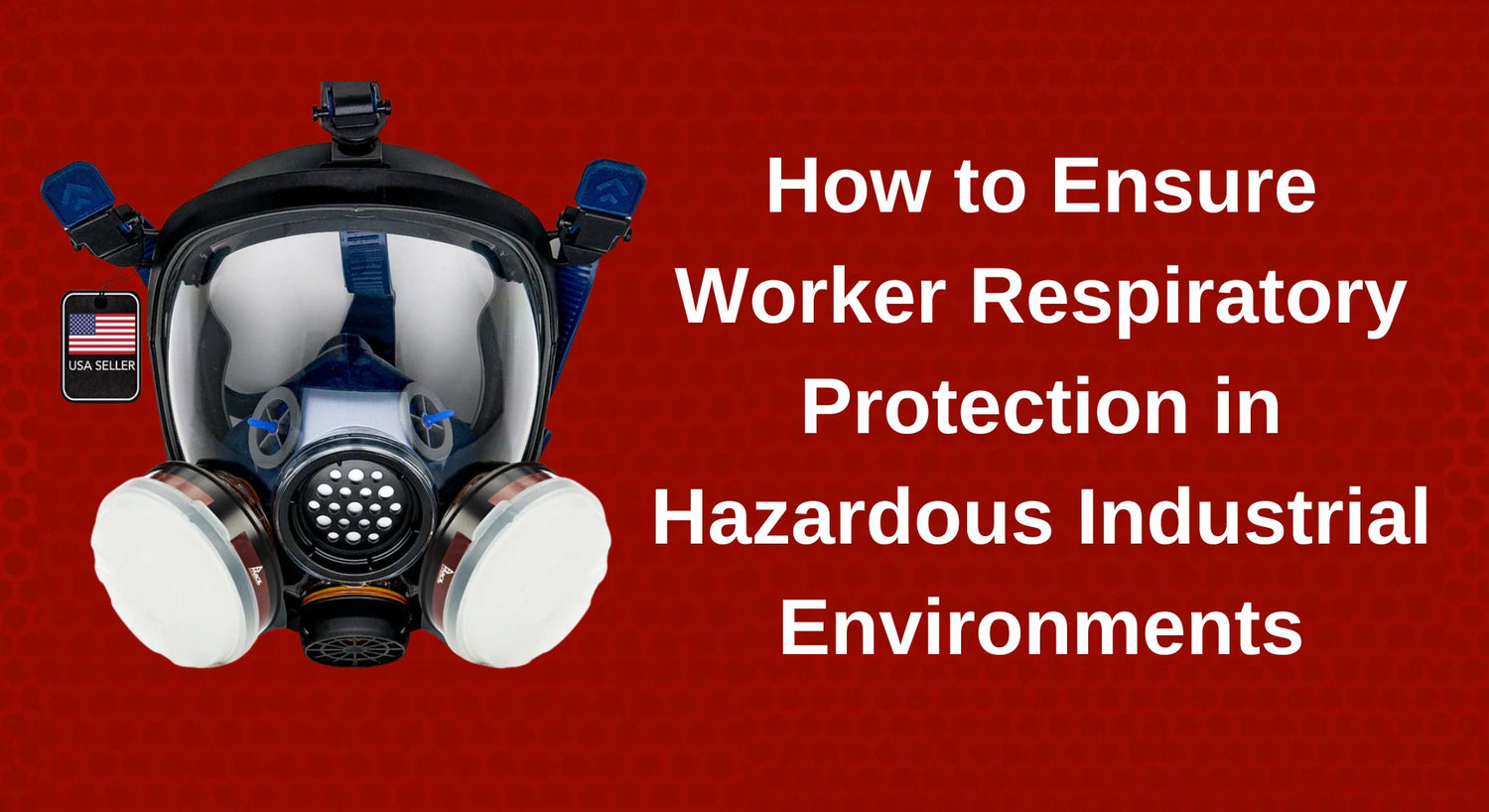Industrial facilities are environments prone to producing and handling hazardous materials and chemicals. They are places where all kinds of toxic elements can end up in the air, such as dangerous gases, chemical fumes, smoke, dust particles, and so on. If workers inadvertently inhale these toxic elements, they could develop respiratory illnesses and other health conditions that pose a risk to their lives.
Therefore, industrial facility managers need to do everything possible to protect their workers from air pollution and the inhalation of hazardous materials. This will not only make the workers happier and healthier but also improve their productivity.
Below are six tips on how you can offer respiratory protection to your workers in hazardous industrial environments.
1) Assess the Health Risks and Hazards of Your Industrial Facility
Every industry facility has different types of risks and hazards depending on what it produces. The first thing you need to do is conduct a comprehensive risk assessment to identify all the potential dangers that your workers face in their jobs.
For instance, you will want to identify the various airborne contaminants that get into the air and pose a danger to people’s respiratory health and wellness. Once you understand the threats in the environment, you will have a better idea of the kinds of protections you can implement to lower the danger to your workers.
Assessing the health risks is a rather scientific process. It will require taking air samples from various operational points in your facility and then analyzing those samples in a laboratory. The objective is to identify the contaminants and their toxicity level to better understand the danger involved.
2) Make Safety Renovations to Reduce the Threat Level
The next step is to renovate and modify the facility and its operations to reduce the number of contaminants produced and emitted into the interior air. Here are some ideas on what this might look like:
- Install a local exhaust ventilation system and plenty of air vents to allow contaminated air to flow out of the building quickly.
- Regularly replace the air filters of your industrial machinery and equipment to lower the toxic emissions in the facility.
- Try to find safer alternatives to the hazardous chemicals and materials used in the operational duties of the facility.
- Create designated enclosed areas within the facility to conduct operations that emit toxic elements into the air. This will reduce the number of workers who are exposed to harmful elements.
In some jurisdictions, you may be required to make these kinds of improvements to comply with local government safety standards and guidelines.
3) Supply Respirators and Protective Gear to Your Workers
Another important step in protecting your workers’ respiratory health is to supply them with high-quality respirators and other protective gear. Respirators and safety masks provide maximum protection against toxic airborne elements in an industrial setting. You can choose between half-face and full-face respirators for your workers.
Full-face respirators are the best because they protect workers’ eyes and mouths. Half-face respirators only protect the mouth and nose but not the eyes. So, if you choose half-face respirators for your workers, try to supply them with safety goggles for added eye protection as well.
Respirators are designed to filter the air workers breathe while working in industrial environments with airborne contaminants. Some respirators filter only particles or gas vapors, while others filter both. Make sure you obtain respirators that can filter both particle and vapor contaminants.
The United States Occupational Safety and Health Administration requires companies to supply their workers with respirators whenever they work with equipment that produces harmful dust, gases, mists, fumes, fog, and other dangerous airborne elements.
4) Require Workers and New Hires to Undergo Physical Evaluations
Not everyone is going to be physically healthy enough to work in industrial environments with hazardous airborne elements. Some people are not even healthy enough to breathe through respirators for extended periods. That is why you need to require all employees and new hires to undergo physical health evaluations to determine if they have strong enough respiratory systems to tolerate the job requirements.
Requiring these physical evaluations will help prevent future incidents of workers facing health issues caused by hazardous airborne contaminants in the workplace. It will also ensure that your organization can maintain its productivity by always having healthy and efficient workers.
5) Routinely Clean and Disinfect the Environment
Don’t underestimate the power of cleaning. You should have professional commercial cleaners routinely clean and disinfect your industrial workplace environment to ensure no hazardous elements linger too long. This is one more way to prevent contamination in the air and on the surfaces of your equipment and furniture.
In addition, you should also clean and disinfect the respirators after your workers use them for the day. Since the respirators are reusable, you’ll want to keep them sanitized for your workers because they will be using them every day. And, of course, remember to change out the filters in the respirators to ensure they continue offering maximum respiratory protection to your workers.
6) Inspect and Repair the Industrial Machinery and Equipment
Does your industrial environment contain older machinery and equipment? It helps to regularly inspect your industrial machinery and equipment to ensure it is not malfunctioning or emitting more contaminants than normal. If you find that it is spewing more contaminants than usual, you need to make the necessary repairs to stop this from happening.
The same goes for respirators, too. Inspect your respirators regularly to look for signs of damage or deterioration. Such conditions can cause them to limit workers' respiratory protection. So, if you see any damage or wear and tear on the respirators, try to repair the damage and replace the faulty components as needed.





















Leave a comment
All comments are moderated before being published.
This site is protected by hCaptcha and the hCaptcha Privacy Policy and Terms of Service apply.